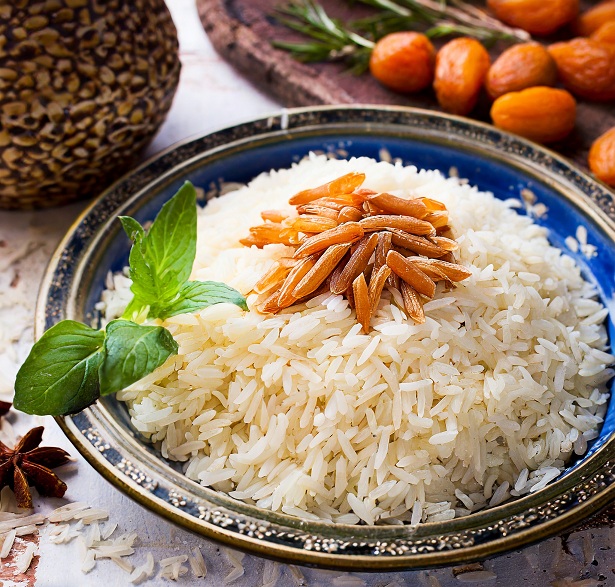Basmati rice is a long-grain variety known for its aromatic fragrance and distinctive flavor. Originating from the Indian subcontinent, many people wonder, “What is basmati rice?” It is a type of rice renowned for its slender grains that elongate when cooked and its unique fragrance reminiscent of popcorn or nuts. What kind of rice is basmati? It falls under the category of long-grain rice and is prized for its fluffy texture.
One might ask, “What is basmati rice used for?” This versatile rice is suitable for a variety of dishes, from pilafs to biryanis, owing to its ability to absorb flavors and maintain a separate grain structure. What is basmati rice good for? It is an excellent choice for creating savory or sweet recipes, enhancing the overall dining experience with its aromatic touch.
Saffron basmati rice is a delightful variation, where the aromatic rice is infused with the unique flavor and vibrant color of saffron. What is basmati rice served with? It pairs exceptionally well with various curries, grilled meats, and vegetables, adding a fragrant and flavorful element to the meal. For health-conscious individuals, there’s also brown basmati rice, a whole-grain alternative with added nutritional benefits. In conclusion, what type of rice is basmati? It is not just a grain but a culinary gem that elevates dishes with its aromatic charm and versatile nature.
What is basmati rice?
Basmati rice is a type of long-grain rice known for its distinct aroma, flavor, and fluffy texture when cooked. It is primarily grown in the Indian subcontinent, particularly in the foothills of the Himalayas in India and Pakistan. The word “Basmati” is derived from the Sanskrit word “Vasmati,” which means “fragrant” or “aromatic.”
This type of rice is commonly used in various dishes, especially in Indian, Pakistani, and Middle Eastern cuisines. It is versatile and can be used in pilafs, biryanis, side dishes, and more. There are different varieties of rice, each with its unique flavor profile, and consumers often choose based on personal preferences and the specific dish they are preparing.
Here are additional details about the unique rice variety known for its aromatic fragrance, long grains, and distinctive culinary qualities.
-
Origins and Growth. Indigenous to the foothills of the Himalayas in India and Pakistan, this rice variety thrives in specific geographical conditions, including high altitudes and fertile soils.
-
Fragrance Profile. Renowned for its captivating aroma, often compared to a blend of nuts and popcorn, this rice owes its distinct scent to the presence of a compound called 2-acetyl-1-pyrroline.
-
Grain Characteristics. The grains are notably long and slender, with a length-to-width ratio that sets them apart. Typically, these grains are four to five times longer than their width, contributing to the rice’s visual appeal and culinary versatility.
-
Culinary Texture. Upon cooking, this rice exhibits a unique texture, remaining separate and fluffy. The grains do not clump together, making it an ideal choice for various culinary applications.
-
Geographical Indication (GI). Recognized with Geographical Indication status, this designation ensures that only rice cultivated in specific regions and adhering to stringent quality standards can be associated with this unique variety.
-
Culinary Application. Widely embraced in diverse cuisines, especially those of the Indian subcontinent and the Middle East, this rice variety serves as a staple ingredient in a range of dishes, including aromatic pilafs, flavorful biryanis, and complementary side dishes.
-
Cultivation Standards. Farmers in designated regions follow precise cultivation practices to maintain the authenticity and quality of this rice variety, ensuring that it meets the established criteria for the distinctive characteristics associated with it.
-
Global Appreciation. Beyond its native regions, this rice has gained international acclaim for its exceptional qualities, becoming a popular choice in kitchens worldwide for those seeking a premium rice experience.
In summary, this rice variety, renowned for its aromatic allure, elongated grains, and culinary versatility, has earned a place of distinction both in its region of origin and on tables around the globe.
Buy Whole whole-grain Rice





Hello, you’ve done a fantastic job. I’m sure my friends will find it helpful, so I’ll check it out and tell them about it.